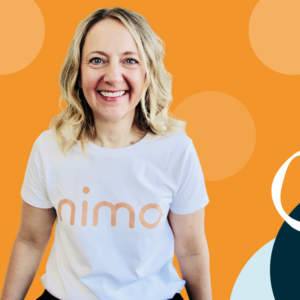Last month, we attended the Customer Owned Banking Association (COBA25) conference in Brisbane, where, as is often the case at industry events, we had the chance to speak with many Lenders in a short space of time. These conversations are invaluable as they give us a live read on how the industry is thinking, shaped by today’s economic pressures, shifting customer expectations, and the fast pace of technological change.
Among the key takeaways this year, we heard some familiar and thought-provoking questions and perspectives on what “out-of-the-box” (OOTB) means for Banks and Lenders based on their knowledge base, inputs and experiences.
To some Lenders, OOTB sounded like they were being locked into rigid vendor workflows. For others, it suggested a “set and forget” platform handover with little ongoing support. For many, it prompted questions about customisation and whether the platform allows them to weave in their own products, policies, and the unique ‘secret sauce’ that sets them apart.
While these concerns aren’t new, they do highlight how much uncertainty still surrounds OOTB. That’s why we wanted to take a moment to unpack what OOTB SaaS means from Nimo’s perspective. By sharing the Nimo model, we hope to bring clarity to support you as you navigate the evaluation of your technology partners more broadly.
Debunking the myths of “out-of-the-box”
At Nimo, OOTB means you can innovate with new technology and bring products to market digitally without a single line of code. It gives you the flexibility to adapt and update on your terms, with collaboration and ongoing support built in.
Let’s debunk some of the most common misconceptions we heard from Lenders.
- Out-of-the-box doesn’t mean rigid workflows
One of the common assumptions we heard was that OOTB platforms come with rigid workflows that force Lenders to operate within the vendor’s rules. At Nimo, it’s quite the opposite.
Our platform has been purpose-built for the Australian financial services industry by a team with deep experience in banking, lending, technology, and the application of technology in financial services. This expertise means we understand the complexity of lending, credit decisioning and core banking in the regulatory landscape. Nimo’s features and workflows are informed by financial services practices and governance, yet designed as highly configurable modules, allowing you to integrate your own workflows, credit rules, policies, and processes, rather than being locked into ours.
What this means for you: OOTB doesn’t mean one-size-fits-all. It’s a platform that fits how you work, lets you embed your policies and workflows, and comes with built-in industry best practices, so you can innovate and scale with confidence, without starting from scratch.
- Out-of-the-box doesn’t mean vendors step back
Another concern we often hear is that OOTB equals “set and forget,” where the vendor flips the switch and walks away. That’s not how we work.
Collaboration is at the heart of our onboarding. From the start, we partner with you to configure your products, policies, and workflows into the platform. Setup includes real-world testing to ensure compliance and operational requirements are fully met before launch.
Our involvement doesn’t stop there. Once live, we continue to support your teams, helping you adapt as your business evolves. Feedback from our Lender community informs ongoing platform improvements, with every enhancement rolled out to all at no additional cost.
What this means for you: Don’t settle for SaaS that leaves you to figure things out alone. Look for a partner that combines technology with hands-on support, and can clarify upfront what’s included, what isn’t, and what’s involved in getting started. Speak with references to understand their experience, lessons learned, and how the vendor collaborates, so you can scale confidently while benefiting from shared insights and expertise.
- Out-of-the-box isn’t a complex, custom and costly project in disguise
Too often, OOTB is mistaken for a toolkit or demo environment that still needs costly, time-consuming custom development to go live to meet a Lender’s requirements. This is not what OOTB means at Nimo.
OOTB means a production-ready platform from day one, ready to configure, not build. This distinction saves Lenders both time and money.
With Nimo, this looks like:
- Workflows, products, and business rules configured without code
- New features deployed without developer bottlenecks
- Market launches without setting up infrastructure or servers
- Regular updates and enhancements instantly made available to all platform users with no production disruption
What this means for you: You don’t need to go back to the days of long, costly custom builds to get real business value. It’s possible to find solutions that deliver immediate business value without the delays, cost, or complexity of bespoke builds. Look for platforms that are zero-code or highly configurable, allowing you to embed your policies and processes seamlessly. When evaluating vendors, ask for a clear path to production, including timeframes, what environments are available (UAT and/or Production) and what resources are required from both the vendor and your team to meet requirements.
Why out-of-the-box works (when done right)
When OOTB is done right, the benefits are immediate, and not the kind that fade once the vendor leaves the room. A well-designed OOTB platform lets you hit the ground running while giving you room to adapt and grow. Think of it like It’s like a premium toolkit out of the box, but with compartments reserved for your own custom tools.
Here’s what Lenders can realistically expect when OOTB is done properly:
- Roll out your way: Start small with modular components or deploy the full end-to-end platform. Scale at your own pace, without being forced into a rigid rollout.
- Free up your people: Automation is there to remove repetitive manual tasks, letting your team focus on higher-value, strategic work.
- Compliance without the headache: Regulatory obligations are baked in and continuously updated, so you stay on top of changes without lifting a finger.
- Go live faster: Weeks, not years. Minimal disruption, maximum impact.
- Shared innovation: Every client benefits from enhancements and new features, so you’re never chasing updates or missing out.
- Future-proof scalability: Products, workflows, and systems grow with you, responding to new customer needs and regulatory shifts without requiring a full rebuild.
Unpacking the promise: making sure out-of-the-box really delivers
When evaluating a platform, it is crucial to understand whether it delivers the promises of OOTB SaaS or if you’re signing up for a bespoke build masquerading as OOTB. Ask questions that dig into the reality of how the platform operates, how flexible it is, and what support you’ll actually get.
Some examples:
- Which products are ready to go from day one? Can the platform handle multi-loan applications, linked securities, broker channels and core banking processes?
- How does the platform handle specialised products, like reverse mortgages, or workflows for responsible lending?
- How quickly can new features be deployed without custom code or long implementation projects?
- How is compliance managed and updated as regulations evolve?
- Which integrations and services come standard, straight OOTB? What are the fees for new integrations, i.e., are they a flat fee or time and materials? Do these fees cover the vendor and the integrated services?
- What infrastructure or server setup is required on our side?
- What will be expected from us, the Lender, to go live?
- What is the innovation roadmap, how will we benefit and what are the costs?
If the answers start with “we’ll build that for you,” alarm bells should ring. OOTB delivers immediate value without hidden costs, complex workarounds, or project delays. Asking the right questions upfront helps you separate genuine OOTB platforms from solutions that will end up costing more, taking longer, and introducing far more complexity than you anticipated.
Putting it all together
Out-of-the-box shouldn’t mean “wait and hope.” It should mean ready to go from day one, flexible, and designed to deliver immediate value, while also enabling innovation and a vision for the future. Deploy end-to-end or start small; either way, automation, compliance, updates, and scalability come standard, with no hidden costs.
See it for yourself
SaaS should grow your business, not increase your bills. Reach out and see how Nimo can help you move faster, scale smarter, and deliver more for your customers, without the surprises.
 |
AUTHOR Leann JonesChief Executive Officer – Nimo Industries |
As CEO and co-founder of Nimo Industries, Leann leads the charge in driving digital transformation within the financial services sector. Having led change in the banking industry and witnessing the challenges lenders face in digitising processes—due to internal complexities, outdated legacy systems, and overly complicated solutions—Leann brings a unique perspective. Coupled with a background and practice in organisational psychology, she understands the cultural dynamics crucial for successful digital adoption and change management.
As adoption of the Nimo platform grows across financial services, Leann is passionate about not only implementing and digitising lending processes for lenders and members but also helping lenders navigate the complexities of transformation. She works to overcome the “this too shall pass” mindset, which can hinder progress. Nimo’s approach combines cutting-edge technology with a deep understanding of human behaviour, enabling FinTechs to succeed where others fail.
